
[ Team LiB ]
Sharing Your Calendar
For Exchange Server users, sharing your calendar is as simple as giving another person
delegate permission to access it. Exchange Server users can use public folders to create
group calendars and contact folders to share with their co-workers.
N
on–Exchange Server users wish they had it as easy. A standalone Outlook user is
unable to easily share her entire calendar in real-time with another Outlook user, other
than forwarding individual items or exporting the calendar to a file.
Outlook can display a calendar hosted on a SharePoint Portal or Windows SharePoint
Services Web site, but it's a one-way share: from a SharePoint calendar to Outlook. In
addition to SharePoint, other Web-based calendar services are capable of sharing
Outlook's calendar data. Some use synchronization software to automate the data transfer,
whereas others rely on exporting a comma-separated values (CSV) file from Outlook and
importing the CSV into the Web-based calendar.
If none of these methods is satisfactory, there are some third-party
applications available that might help. Look for these at
http://www.slipstick.com/outlook/share.htm.
Outlook can save your calendar items in two formats that are supported by a number of
calendaring programs: iCalendar (iCal) and vCalendar (vCal).
If you've used older versions of Outlook, you might be familiar with
NetFolders and MS Mail workgroup post office. Although both
applications were useful for sharing Outlook items, they aren't available
in Outlook 2003.
NetFolders caused a number of problems, from duplicated messages to
deleting items it was supposed to share. Because of this instability,
Microsoft removed it from Outlook 2002.
MS Mail is no longer supported by Microsoft, nor is it Y2K compliant,
although that doesn't seem to affect it.
Task: Use iCals to Send Appointments by Email
The best way to share appointments with other Outlook users is by using iCal. This is an

Internet standard format for calendar files and is used by other calendaring programs in
addition to Outlook. It's easy to use: Save your appointment as an iCal and forward it
others. You can use the Actions menu to create and forward the iCal.
1. Select one or more calendar items.
Hold the Control key as you select items in the Day/Week/Month view
to select multiple items. It's often easier to switch from the
Day/Week/Month view to By Category view and select the items.
2.
3. Choose Actions, Forward as iCalendar.
A new message form opens with the selected calendar items as *.ics files—ready to enter
the recipient's name and your message (see Figure 22.1).
Figure 22.1. Send your appointment items to others using the iCalendar format.
vCals and iCals are text files that use a specific format for the text and
have a *.vcs or *.ics extension. After saving a vCal (.vcs) or iCal (.ics)
file to your hard drive, you can open it using Notepad to see how the
text is formatted.

Using Meeting Requests to Share a Calendar
Another way to share an appointment with others is by sending it to them as a meeting
request. Although it's easiest to do this when you create the appointment, you can also
open any calendar item and choose Invite Attendees.
After selecting Invite Attendees, the To field is included on the appointment form. Enter
the email addresses you want to send the meeting request to, complete the appointment
details, and select Actions, Request Responses to remove the check from the menu
selection. You won't get a reply when the recipient accepts the meeting, but it will be
added to the recipient's calendar and any changes you make to your calendar will be sent
to the recipient so that you won't have to send another meeting request.
Using MSN, Yahoo!, and Other Web Services
MSN and many other Web sites provide online calendaring options. Many also offer
ways to synchronize with Outlook. Some of the methods used to share data between a
Web calendar and Outlook are nothing more than using import/export functions and are
not true synchronization. Sharing the data involves exporting the Web calendar as a CSV
file and importing it into Outlook, or exporting Outlook's calendar to a CSV file and then
importing it into the Web calendar.
Learn more about importing and exporting in Hour 10, "Managing
Your Data."
MSN and Yahoo! use custom versions of Intellisync to synchronize Outlook with the
Web-based calendar. Using Intellisync enables you to automate the synchronization of
your calendars with a Web-based interface that you can access from anywhere.
At the time this book is being published, there is a fee to use MSN
Calendar whereas Yahoo! Calendar is free.
Yahoo!'s calendar supports synchronizing multiple Outlook calendar, tasks, notes, and
contacts folders. You can share your Yahoo! calendar with family and friends who use
Yahoo!; the only requirement at this time is that you maintain a free Yahoo! account.
Using Web Publishing

One of the easiest ways to allow others to see your calendar is to publish it as a Web page
and view it in Internet Explorer. You can save the files to any folder and view the
calendar on your computer or local network; a Web server is not required. If you copy the
HTML pages to a Web server, other people can view it as well.
If you want to share you calendar with friends and family, you'll
need a Web host. Many ISPs provide some free Web space to their
subscribers. Or you can use a free service, such as Yahoo!
GeoCities.
The HTML calendar is a monthly calendar with list of daily appointments and details
included.
1. Choose the File, Save As Web Page.
2. In the Save As Web Page dialog, select the start and end dates for the date range o
f
the appointments you want to include in the calendar (see Figure 22.2). This
determines the dates of published appointments. The finished calendar displays a
calendar grid containing the entire month.
Figure 22.2. Use File, Save As Web Page to save your calendar as a Web page.
Save it to your computer and upload it to a Web server, if desired.
3. Select the other options as desired. If you choose to use a background image, it
will work better if you use one that is light-colored and small enough to tile.
4. In the Filename field, enter the path and a filename as shown in Figure 22.2. The
Save As Web Page Wizard adds the file extension for you. When you click the

Save button, the wizard creates 18 files, so you might want to include a subfolder
in the calendar path.
The calendar uses a somewhat ugly aqua color scheme. You can change
the color scheme only by editing the cal.css file in Notepad.
The colors are listed in cal.css in hexadecimal format, with entries
similar to this: color:#669999. You can replace the hex codes with
color names; such as color:LightYellow. Many natural-language color
names will work, from the basic colors like Red, Blue, and Yellow to
DeepSkyBlue, HotPink, and ForestGreen.
If you want to use hex codes, search the Internet for hex color picker to
find lists of hex codes.
When you're finished, make a copy of the cal.css file (because Outlook
replaces it each time you use Save As Web Page), and then restore the
copy after you save the calendar.
The Save As Web Page Wizard creates an okay calendar, but it has lots of limitations and
is really lacking in many areas, including how it handles multiple appointments on the
same day. It's difficult to customize, even using FrontPage or another HTML editor. It's
also unsuitable for creating printed calendars (see Figure 22.3).
Figure 22.3. Outlook's calendar published as a Web page.


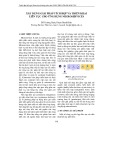
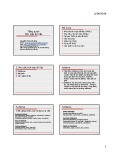
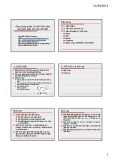

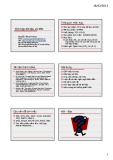




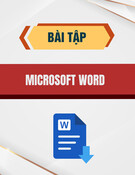
![Bài tập Tin học đại cương [kèm lời giải/ đáp án/ mới nhất]](https://cdn.tailieu.vn/images/document/thumbnail/2025/20251018/pobbniichan@gmail.com/135x160/16651760753844.jpg)
![Bài giảng Nhập môn Tin học và kỹ năng số [Mới nhất]](https://cdn.tailieu.vn/images/document/thumbnail/2025/20251003/thuhangvictory/135x160/33061759734261.jpg)
![Tài liệu ôn tập Lý thuyết và Thực hành môn Tin học [mới nhất/chuẩn nhất]](https://cdn.tailieu.vn/images/document/thumbnail/2025/20251001/kimphuong1001/135x160/49521759302088.jpg)
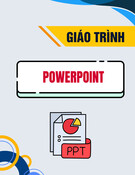

![Trắc nghiệm Tin học cơ sở: Tổng hợp bài tập và đáp án [mới nhất]](https://cdn.tailieu.vn/images/document/thumbnail/2025/20250919/kimphuong1001/135x160/59911758271235.jpg)

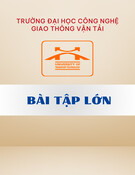
![Giáo trình Lý thuyết PowerPoint: Trung tâm Tin học MS [Chuẩn Nhất]](https://cdn.tailieu.vn/images/document/thumbnail/2025/20250911/hohoainhan_85/135x160/42601757648546.jpg)



![Bài giảng Nhập môn điện toán Trường ĐH Bách Khoa TP.HCM [Mới nhất]](https://cdn.tailieu.vn/images/document/thumbnail/2025/20250806/kimphuong1001/135x160/76341754473778.jpg)

